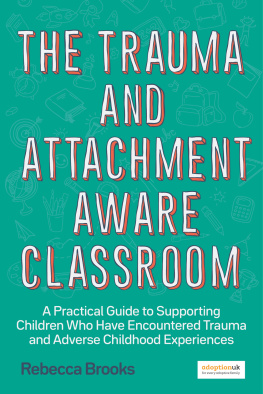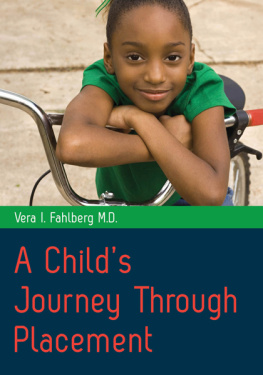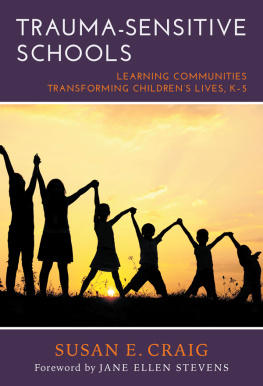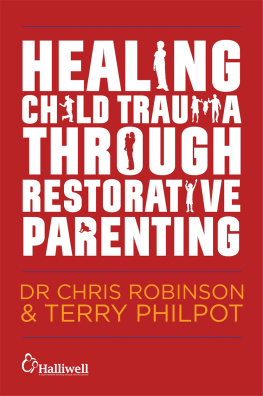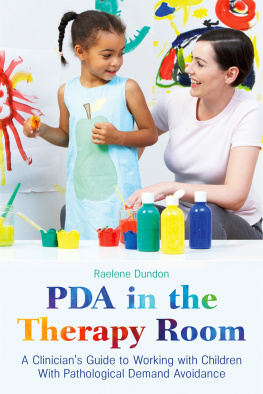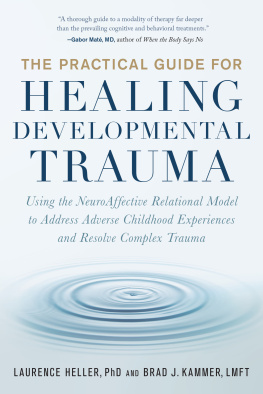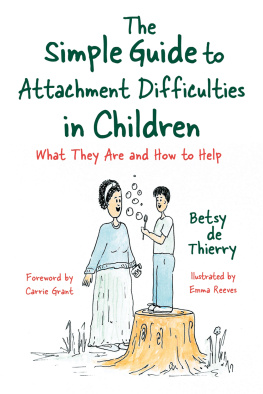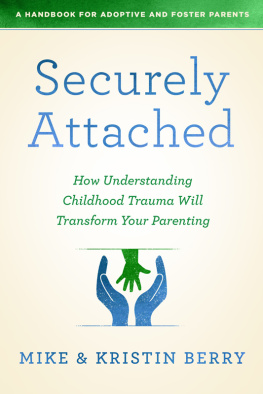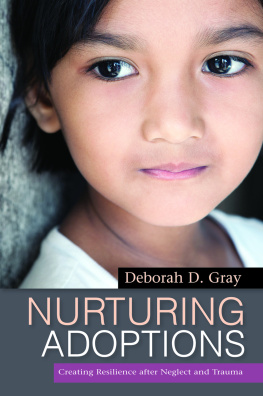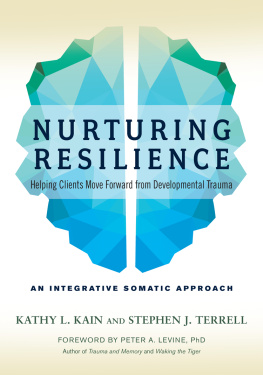
THE TRAUMA AND
ATTACHMENT-AWARE
CLASSROOM
A Practical Guide to Supporting
Children Who Have Encountered Trauma
and Adverse Childhood Experiences
Rebecca Brooks

Jessica Kingsley Publishers
London and Philadelphia
Contents
A Note About the UK
Education System
In the UK, education is a devolved matter, with each nations administration governing its own education provision. As a result, the curriculum, examinations, funding streams and inspection regimes are different across the UK.
Here is a short guide to some of the terms and concepts included in this volume which may be unfamiliar to some readers:
Year groups, ages and stages
England and Wales
Compulsory education begins at age five, but in practice, children usually begin their education during the school year after their fourth birthday, and continue until they are 16. In England young people over 16 must be engaged in full- or part-time education or an apprenticeship or traineeship until they are 18.
The school system is divided into stages. The Early Years Foundation Stage (EYFS) covers children aged three to five, including the first year of primary school (Reception). Key Stage 1 covers children aged five to seven (Years 1 and 2). Key Stage 2 covers children aged 7 to 11 (Years 36). At secondary school, Key Stage 3 includes children aged 11 to 14 (Years 79), Key Stage 4 covers young people aged 14 to 16 (Years 1011) and Key Stage 5 covers young people aged 16 to 18 (Years 1213).
A small number of areas operate a middle school system, where children will transfer from primary to middle school at Year 5 or 6, and remain there for approximately three years before moving on to secondary or upper school.
Scotland
Children begin their compulsory education aged between four and a half and five and a half, depending on when their birthday falls. They remain at primary school for seven years (P1P7) and, aged 11 or 12, move to secondary school for four years (S1S4), with an optional further two years (S5S6).
Northern Ireland
Children usually start school in the September after their fourth birthday, and attend until they are 16. The schools system is divided into stages, comprising Foundation Stage for children aged four to six (P1P2), Key Stage 1 for children aged six to eight (P3P4) and Key Stage 2 for children aged 8 to 11 (P5P7) at primary school. At secondary school, Key Stage 3 covers children aged 11 to 14 (Years 810) and Key Stage 4 covers young people aged 14 to 16 (Years 1112).
Statutory examinations
Across the UK, students will take statutory examinations towards the end of their compulsory schooling at or around age 16. In England, Wales and Northern Ireland, students will take General Certificate of Secondary Education (GCSE) examinations in several subjects. Those who continue post-16 can study AS-Levels followed by A-Levels, or a range of other more vocational qualifications.
In Scotland, students can take National 3/4/5 at or around age 16, and then go on to take Highers and Advanced Highers as part of their further, non-compulsory education.
Each nation has its own arrangements for monitoring student progress throughout their education. For example, in England, all children also undergo a formal statutory assessment at the end of Key Stage 1 and Key Stage 2 in the core subjects of English Language (including reading and writing), Mathematics and Science. These assessments are commonly called SATs and are a combination of teacher assessments and formal tests.
Special or additional educational needs
In each nation of the UK, there is a system for providing children with complex special or additional needs or disabilities with a legal document which details their needs, and the support that will be offered to them. In England this is called the Education, Health and Care Plan (EHCP); in Wales it is the Individual Development Plan (IDP); in Northern Ireland it is the Statement of Special Educational Needs; in Scotland it is the Co-ordinated Support Plan (CSP).
Introduction
It is nearly 20 years now since a Romanian charity worker gave me a crash course in attachment and trauma. I was volunteering at a summer camp in north-eastern Romania. All of the girls at the camp lived in Romanias institutions orphanages, as we came to call them in the West and the charity I was volunteering for organised annual holidays for them, amongst other activities.
My Romanian friends run-down of what we could expect from these girls and young women sounded a little harsh to my naive ears. We were warned that they might indiscriminately attach to us, seek close physical affection even though they barely knew our names, and hang around at the end of the camp, hoping to be given gifts of spare toiletries, trinkets and clothes as we packed up our things.
They will make you feel as if youre so special to them, she said, but youre just another group of people in their lives who are here today, gone tomorrow. Its all about survival.
The very next evening, a nine-year-old girl attempted to sit on my lap and cuddle up to me like a toddler while we were watching a film. In fact, everything we had been told was accurate. These girls were as varied as any group of children and teens you might find variously funny, smart, boisterous, timid, sporty, bookish but they were all survivors of Romanias infamous orphanage system, abandoned to the state for various reasons, and subject to a carousel of paid carers and volunteers in institutions that could house hundreds of children. The impact was obvious in the way they approached every aspect of their lives.
I didnt immediately make the connection between the challenges faced by these young women, and those faced by many children I encountered in the classroom. However, many more summer camps, two years spent living and working with Romanias copii abandonai , and my own experiences as both a foster carer and an adoptive parent have demonstrated to me beyond doubt that childhood trauma can have a devastating impact on the development and life chances of children.
This is a view that is increasingly borne out by research and statistical evidence, and there are few places where this impact is more keenly felt than in our schools. Children who have experienced the worst possible start in life are routinely struggling, failing and being excluded from school. They are more likely to have special educational needs, more likely to be excluded, and more likely to leave school without any qualifications. The challenges they face in school spill over to bring chaos to home lives, and impact on the students and teachers who share the classroom with them.
When I made that first visit to Romania, I had already been trained as a teacher and spent years in various secondary school classrooms, and yet I had never even heard of attachment disorder, or Foetal Alcohol Spectrum Disorders, or many of the other difficulties experienced by children who have had adverse childhood experiences. As my understanding grew, I couldnt help but think of some of the children who had been through my classrooms in a new light, and wonder whether I could have done things differently for them if I had known and understood the complexity that lay behind their difficulties.
What follows is the book I wish I had when I was in the classroom every day, faced with class after class of children and young people, breathtaking in their variety, complexity and individuality. There are some explanations, some descriptions and some tried-and-tested strategies, as well as contributions from parents and carers of traumatised children, and from several schools which have embarked on a journey towards a more attachment- and trauma-informed approach.
Next page
